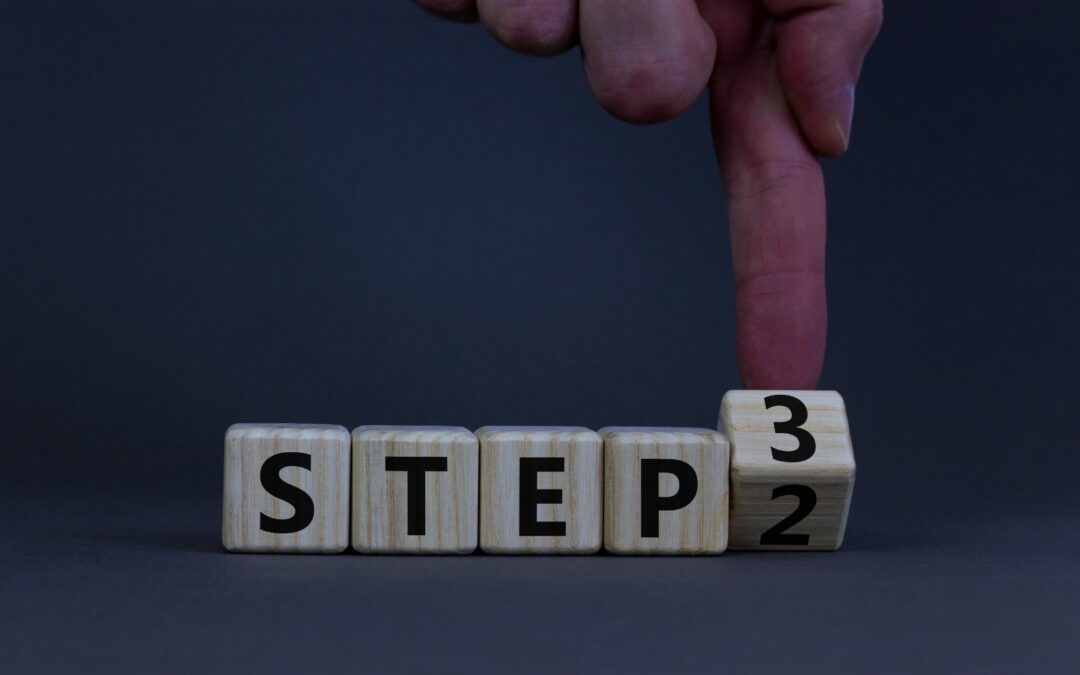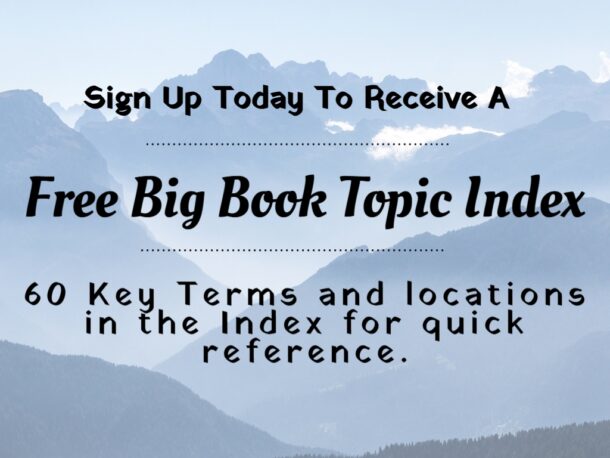AA Step 3: Surrender, Stoicism & Your Higher Power in Recovery
How did Step 2 go? For some, especially agnostics and atheists, it can be a significant challenge. As we will continue to see in Step 3, 12-step programs provide a broad doorway for us to enter when it comes to the form that power greater than ourselves takes. It allows anyone with a desire to stop drinking and an open mind to take this critical Step.
Step 3 reads, “We made a decision to turn our will and our lives over to the care of God as we understood Him.”
Like innumerable people with substance abuse issues, the capital “G” may immediately throw up barriers. I encourage you to read through this article with an open mind because AA is not pushing the big guy on anyone. We are in complete control when defining our personal “God as we understood him.”
Marcus Aurelius, Emperor and Stoic philosopher, teaches us, “The impediment to action advances action. What stands in the way becomes the way.” Think about that for a minute: if we see Step 3 as a barrier to participating in a 12-step program, perhaps Step 3 is the way to recovery for us.
There is one simple but not always easy requirement for taking Step 3: Willingness. Few among us ever instantly shed the non-virtuous side of our self-will. We may give it over to a higher power, take it back, and repeat this cycle throughout recovery. The key is to remain mindful of when we see our self-will at work and are willing to turn it back over.
Alcoholics Anonymous offers us a design for living. Taking all the steps to the best of our ability is the way to move from design to building a vastly improved life in sobriety. Taking the third Step is a crucial milestone as our higher power, God, as we understand him, will become a cornerstone of our recovery. Let’s start by defining a decision. We may take what it means for granted, but it is a key action we need to understand fully.
What is a Decision?
We all believe we know a decision as we make hundreds of them daily; however, deciding on Step 3 requires more thought and soul-searching than deciding what to wear out of the house today.
As Tony Robbins, author and motivational speaker, says, ”A real decision is measured by the fact that you’ve taken a new action. If there’s no action, you haven’t truly decided.” Deciding is not just checking a box in our minds; it requires action. Much like Step 1, practicing this Step and renewing our decision daily reinforces the actions we need to take that day.
Understanding Step 3
Step 3 is about surrendering control. It’s acknowledging that we can’t manage everything on our own. This Step isn’t easy as it requires trust and humility, which we often lack in abundance. Essentially, we say, “I need help, and I am willing to accept it.”
To complete the Step, we take two distinct actions. First, we decide as defined above. Second, we turn our will and our lives over. If we look at our lives objectively, I do not think we can honestly say that we did a great job managing our lives by self-will and determination. The term “self-will run riot” is often used to describe our decisions and actions that led us to seek help for our disease. While we may resist giving up control out of habit, can a “God as we understood him” do any worse job than we did?
Be sure to refer to the Step 2 article if you have concerns about using the word “God” in this Step. It is just a word, and its use is a placeholder for any definition of God we choose to use in the program. Many will start off using an AA group as their higher power, and one’s definition of God may change throughout sobriety, as mine has. There is even an acronym in AA for this choice:
G – Group
O – Of
D -Drunks
How Do I Work Step 3?
To a degree, we started working on Step 3 when we took Step 1 and became willing to be dependent on AA to help us recover from alcoholism. We agreed to follow the program to the best of our ability, and we depend on others who have gone before us to teach us the practical application of the program in our lives.
Making the decision means stating that we are willing to turn our will and lives to a higher power. The initial decision is the starting point: planting a seed. We are planting the seed and vowing to care for it over the long haul. Over time, we need to water this seed, protect it from harm, and ensure it gets plenty of light.
The real work on this Step is a daily commitment to keep our self-will in the background and rely on our higher power for guidance to align our thoughts and actions with becoming better versions of ourselves. The practice starts with knowing when our self-will imposes itself on our thoughts and actions. Once identified, we can turn it over. Turning it over can be as simple as saying, “Thy will be done, not mine.” If we must utter this 100 times a day, we do that.
We may experience significant internal resistance as our egos fight to maintain control of everything. We want to counter the ego by practicing mindfulness, recognizing our thoughts and feelings without judgment, and surrendering our will when it creeps in. Many apps and online resources can help us better understand how to practice mindfulness.
Also, we can be vocal about our challenges in AA meetings to get support and learn from others how they work the Step. As always, we are not alone; sharing experiences can make the journey easier. Few find this Step easy to practice consistently, so do not worry about slow progress.
Lastly, be patient with yourself. We are not working in a once-and-done Step. While we will improve over time, the self-will is persistent, and we will practice this throughout our lives. Change takes time, so be kind and patient with yourself as you navigate this process. Working the program is not on a regimented schedule. It is more important to work a step thoroughly. The AA Big Book reminds us that half-measures avail us nothing.
What does Stoicism have in common with Step 3?
Stoicism, an ancient Greek philosophy, teaches the development of self-control and resilience to achieve personal happiness. The Stoic philosophy primarily focuses on self-reliance to face life’s challenges; however, surrendering and turning our lives and wills over still aligns with Stoic thinking, as I will explain.
When we surrender in Step 1, we practice the Stoic concept of “Dichotomy of Control.” This concept divides our lives into two categories: what we can and cannot control. We clearly could not control our drinking, so we found a program to help us overcome our issues and chose to follow it. While we are powerless over alcohol, it takes courage and our actions to enter and work the program.
Secondly, what is Step 3 asking of us? We are turning over our will and our lives. Is this possible in a literal sense? No. Unless we admit ourselves to a lifetime in a psychiatric hospital or become imprisoned, we still must make self-willed decisions daily to function. We must make daily decisions about what to wear, what to eat, and how to interact with people. We are not asking a higher power to run our lives but to be a source of guidance.
Turning our will and lives over is about seeking an objective source of guidance and support to lean on when our stinking thinking is active. Our higher power guides us to the appropriate response when our will may tell us to retaliate. Eventually, we integrate these more positive responses into our self-will. We become better people in recovery and rebuild our self-will, aligning it with virtuous rather than destructive living.
Seneca, a Stoic philosopher, in his letters to Lucillius, notes, “Choose someone whose way of life as well as words, and whose very face as mirroring the character within, have won your approval. Be always pointing him out to yourself either as your guardian or as your model.” Seneca uses the word model, an appropriate way to view a higher power. We refer to our model, putting our selfish desires aside when crafting our lives and actions. Jesus Christ, Buddha, a group of drunks, and many other models exist that we can use to shape our lives.
While we will always need a higher power in our lives, we are not entirely dependent on this higher power to live. We still must muster the courage to attend meetings, work the steps to the best of our ability, and not pick up a drink one day at a time. The aim of Step 3 is to remove our destructive self-will and open ourselves to the changes needed to embrace the promises of sobriety.
We are self-reliant in practicing the program, but not in the sense that we do it alone or without any assistance. If we do not rely on ourselves to take action to practice the program of AA, we will not stay sober. This is echoed in the chapter on Step 3 in the Twelve Steps and Twelve Traditions book, “The more we become willing to depend upon a Higher Power, the more independent we become. Therefore dependence. As AA practices it, it is really a means of gaining true independence of the spirit.”
Integrating Stoic Principles into our work
Being willing to accept change is a key act in practicing Stoicism. The Stoics strove to accept change gracefully. We fully understand that becoming sober will require significant change in our lives. Shifting from complete control to admitting our powerlessness and believing a higher power can restore us to sanity will be impossible with a closed mind.
Also, accepting what we cannot control, like the Stoics, is critical to living on life’s terms. Fighting to control the things we cannot lead to frustration, anger, and resentment. It is made clear in AA that those with alcoholism cannot afford anger or resentment. My favorite tool in AA is The Serenity Prayer, which effectively keeps me mindful to analyze what I can and cannot control.
Conversely, we must also act on what we can control. We can control our actions, thoughts, and attitudes. We need to spend our energy addressing these things. Work on making positive changes in these areas aligns with Stoic philosophy and the essence of the third Step. Here, a daily journal reviewing each day’s actions and identifying our challenges with control can be helpful.
Stoicism is all about building resilience. In Step 3, as we trust a higher power and learn from its guidance, we continually develop inner strength to face life’s challenges. Resilience grows naturally as we continue to work the program and make the practices part of our everyday lives.
Conclusion
Step 3 is foundational work for lasting and fulfilling sobriety. I recommend reading about the third Step in the Twelve Steps and Twelve Traditions book. It is an excellent source for a better understanding of what dependence truly means in our lives and AA. AA and Stoicism have many practical parallels we can use as we act to turn our will and lives over to a higher power. Studying both sources of wisdom can only enhance our lives.
Remember that the key is being willing to put self-will in the backseat and let our higher power navigate. We navigators do not have outstanding track records, so it would be a relief to turn those duties over to a more qualified prospect. Millions, inside and outside of AA, have seen the benefits of this practice, so there is no reason we cannot achieve the same.
“Do not be discouraged. No one among us has been able to maintain anything like perfect adherence to these principles. The point is that we are willing to grow along spiritual lines.” — Alcoholics Anonymous (Big Book), p. 60
Resources
Step 3 from 12 Steps and 12 Traditions Book – PDF
Step 3 from 12 Steps and 12 Traditions Book – Audio



